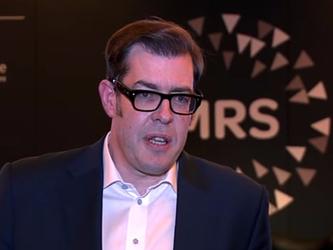Picture this – visuals are ‘gold dust’ for brands and researchers
Chairing a session at the Impact 2016 event, Laura Morris, director, Trinity McQueen said the research sector needed to “up our game” regarding the delivery of information in a way that was memorable and drove empathy and action. “Visual really is the new language,” she said
Jon Puleston, VP innovation with Lightspeed GMI, unveiled the science of visual communication, demonstrating how images can be not just more memorable but more quickly recognised than text alone. Simple is usually better, and when icons are used in survey research, the more literal, the better.
When images are used to deliver and “sell” research findings, however, it is the slightly more intriguing images that are most effective. The presence of human faces boosts recall by more than 15%, the colour red is more memorable than blue and green, and legibility always trumps design.
The sudden ubiquity of photographic imagery – there are almost two billion photos shared every day on social media – gives researchers a valuable opportunity to get consumers to show, not tell, about their lives, the conference heard.
Simon Walker, a former newspaper photo editor and now director of crowds at Tempo, said consumers were willing to share their experiences of brands “in the moment” through photos taken on their phones, and found this way of providing information highly engaging.
The resulting photos told powerful stories that could be analysed to inform business strategy. “Using photography can provide inspiration, not just information,” Walker said.
Bob Cook, innovation and inspiration director at Firefish, demonstrated how virtual reality filming could put a viewer right in the world of the subject, creating powerful memories and a sense of empathy.
“Useful insight must create impact and create action,” he said. “Impact does not happen by accident but by design. Brands want to connect with people, immersive virtual reality allows you to be present in their lives. That presence leads to connection and it’s gold dust for brands to be able to play with that.”
Emma Whitehead, graphic and creative director at Kantar, cautioned that arming researchers with new visual tools without a good sense of how to use it could be dangerous, but said she was heartened by the growth of new technologies and the willingness of the market research industry to explore them.
“We still have a fundamental problem with not locking in the communication and connection to the audience at the start of the project; that’s where I think we need to see the effort, as much as anything.”

We hope you enjoyed this article.
Research Live is published by MRS.
The Market Research Society (MRS) exists to promote and protect the research sector, showcasing how research delivers impact for businesses and government.
Members of MRS enjoy many benefits including tailoured policy guidance, discounts on training and conferences, and access to member-only content.
For example, there's an archive of winning case studies from over a decade of MRS Awards.
Find out more about the benefits of joining MRS here.












0 Comments